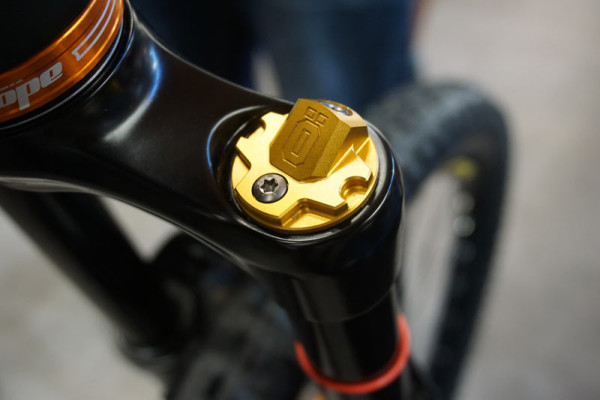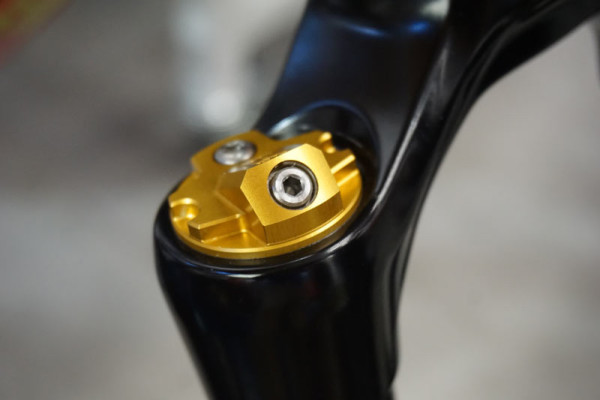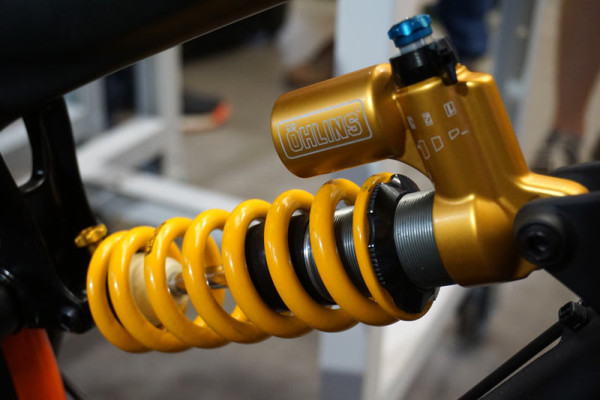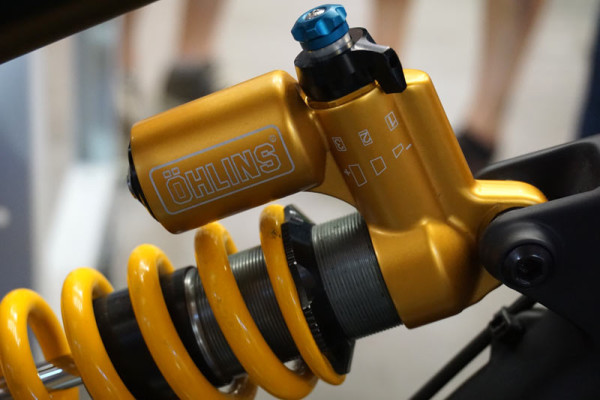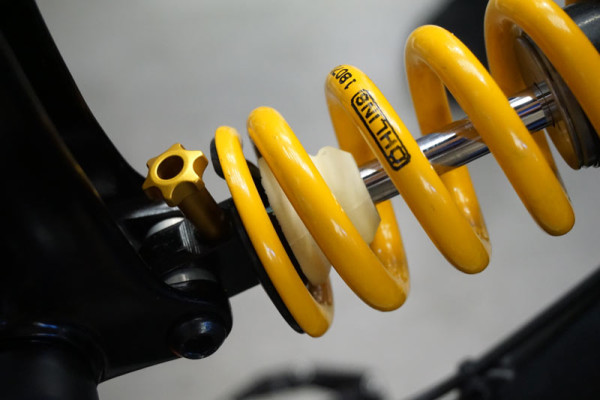There’ve been a lot of rumors around Ohlins’ mountain bike products, stirred up largely by social media posts from European distributors. The latest teaser comes from a bike placed in Hope Tech’s Eurobike booth adorned with an as yet unseen coil rear shock and fork damping cartridge slid into a Rockshox Pike.
We reached out to Ohlins USA’s marketing and MTB manager, Jeff Baucom, for details. But first, a little primer on Ohlins’ damping technologies and how they’ve been applied to mountain bikes:
Their damping systems come in two flavors. The TTX is a twin tube system with an inner and out tube and oil flows between the two and is regulated by a check valve. It’s found on their coil-over rear shocks only for mountain bikes (moto and auto is another story). The STX, which is what’s found in their TTR air shock, is a single tube system and works by pushing oil through a more traditional damping circuit.
Currently, Ohlins offers the STX22 drop-in cartridge for Fox 40 DH fork. Packaging and weight issues mean only the STX system will fit on mountain bike fork, and their drop-in cartridge will only fit in the Fox 40 thanks to its larger stanchions.
As for the Boxxer, Adam Brayton has been running a custom Ohlins damper in a Boxxer on his Specialized Demo 8 DH bike. And then there was that other Boxxer prototype that showed up a while back in a couple places. Sad to say it’ll probably never see production, and here’s why: The Boxxer’s 35mm stanchions (and those of the Pike shown here) were too small to use a complete cartridge system, so Ohlins built the damper directly into the stanchions. The problem with doing that on a mass production scale (besides the aftermarket installation woes) is they found that the internal diameters of Rockshox’s stanchions were not consistent from fork to fork, so each damper would have to be built specifically for each fork. They say that’s not a knock against Rockshox, and since that brand uses the closed Charger Damper it doesn’t matter.
So if they’re not headed to production, why make them? “They’re being used as test mules to develop (our) own complete forks,” Baucom said. “The focus moving forward will be complete forks. That’s really all I can say on the matter.”
So, yeah, the rumors are true.
BTW, those screws on top of the fork are the compression adjustment and an air bleed port to release any air that might get trapped in the system. On moto forks, there’s a third screw that’s the nitrogen fill valve.
On the same bike in Hope’s booth was this coil rear shock, which has a very different piggy back placement than the units found on Specialized’s bikes. “Everything’s the same,” says Baucom, “it’s just a reservoir that’s situated differently to accommodate the fit on different bikes. It’s only available in Italy and France, because those markets are test markets for aftermarket products.”
In other words, where the Specialized models are made specifically to fit their frames, this is a universal fitment that’s only available in Italy and France “at the moment”, but that’s likely to change – we’re guessing sooner rather than later.
It has separate high and low speed compression knobs. High speed has a wide range of clicks through the blue knob, and low speed has three settings – open, medium and firm.
The rebound knob is gold and sits at the bottom.
All future products in the aftermarket will be handled through the Specialized dealer network for as long as their agreement with Ohlins remains in place, which has auto renewing clauses that will make it difficult to get out of. That doesn’t mean Ohlin’s products will only be for Specialized’s bikes, it just means you’ll have to buy it through the Big Red S if you want them. While that may seem restrictive, it’s important to note that before Specialized ponied up the development funds for mountain bike suspension, Ohlins hadn’t touched the mountain bike market since helping develop the original Cane Creek Double Barrel many years ago.
